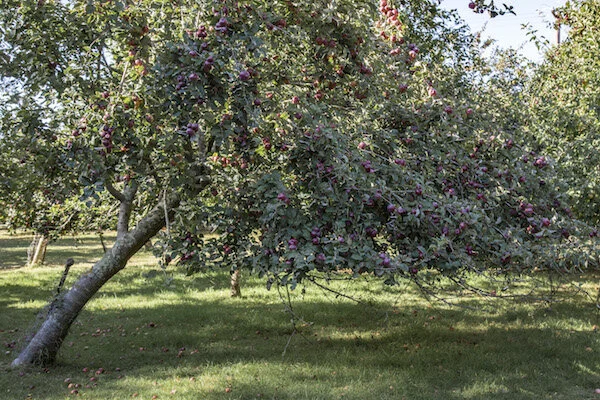A drop of the finest
It’s harvest time, and the tang of fresh apples is in the air at TeePee Cidery on the outskirts of Carterton. Dr Trevor FitzJohn and wife Frances grow cider apples and Perry pears to create a premium sparkling cider that’s akin to champagne. By Katherine Robinson. Photos by Lucia Zanmonti.
Originally from England, Trevor has spent whatever time he could spare from being a consultant radiologist at Wellington Hospital and Wakefield Radiology, and then a director of Pacific Radiology, to nurture an orchard and cider. Recently retired, he is planning devoting more time to cider-making.
“I’ve always enjoyed drinking English cider. And we have friends who make cider in England in the West Country. I thought, ‘Why don’t we create a bit of Britain here?’” he says.
A labour of love, over the years the couple have gathered over twenty different varieties of apple – Kingston Black, Tom Putt, Ellis Bitter, Yarlington Mill and Bramley to name a few, plus some rare Perry pears. These were tracked down all over New Zealand, growing sometimes almost forgotten in 100-year-old orchards or by the side of the road. They’ve reaped the rewards with an orchard full of mature apple trees, branches heavy with this year’s crop.
Wanting to keep the process as natural as possible and to allow full flavour to develop, Trevor and Frances harvest the apples after they’ve ripened and dropped. Hence, at least part of the reason for the cider’s name –The Earl’s Drop.
“Earl was Frances’s father’s name, E is for England and the cider is a good drop. It’s also the Earl because it’s a sparkling artisan cider produced using the same method (méthode albion) as the English gentry developed years ago,” says Trevor.
In the mid-1600s, cider became the tipple of choice for English aristocrats. On the great estates in the West Country, cider-makers experimented and discovered that if they added a little sugar to cider in the bottle and recapped it, it would re-ferment, creating fine bubbles. At the same time English glassmakers developed thick enough glass to withstand the pressure in the bottle. Years later in 1693, Dom Pérignon developed the same method with grapes, known to us as méthode champenoise.
TeePee Cidery produces from 2,000 to 3,000 litres a year from a large shed filled with all that’s needed for cider-making – from a cider press to a bottle washer. It’s been put together with ingenuity, allowing Trevor and Frances to do everything themselves – from crushing the apples through to sticking labels on bottles.
“Though thanks to Covid I did the 2020 harvest by myself,” says Trevor.
It’s a production method that lets nature do its work. After the apples have been crushed into pomace or a pulp, they are spread onto cloth which will have picked up wild yeast spores in the air. Apple juice and the yeast are then squeezed out by the rack and cloth cider press.
“Rather than using commercial yeast it gives a rather complex flavour profile. We just like to go with what nature gives us really, we don’t want to use chemicals,” says Trevor.
The juice is kept in a barrel for six months to a year, before being bottled for a second fermentation of two to three years. In other cideries perhaps this would have taken place in an underground cellar, but the water table is so high here that Trevor has converted a shipping container chilled to a permanent 12 degrees. The bottles are turned (riddled), disgorged, then recapped with eco-friendly Zork caps and presented in a champagne-style bottle.
For anyone who has only tried sweet cider, the taste is a revelation. This is refined, dry and, in fact, very similar to champagne. This refinement has been rewarded - The Earl’s Drop has picked up awards including a Bronze at both the New Zealand Cider Festival and at the Red Hill Cider Show in Melbourne last year. To order, see www.teepeecider.co.nz




